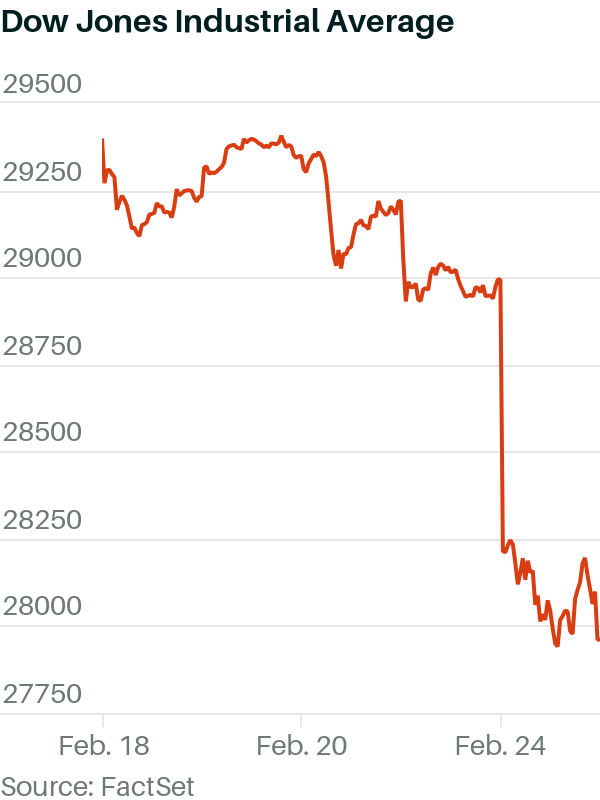Understanding the Dow Jones: A Key Player in the Stock Market
The Dow Jones Industrial Average has long been regarded as a barometer for the overall health of the stock market and the economy. Its movements are closely watched by investors, analysts, and policymakers alike. In this blog post, we’ll explore what the Dow Jones is, how it functions, and the insights it provides into trends within the stock market. We will also delve into a recent notable drop in the index and what historical data suggests about such events.
What is the Dow Jones Industrial Average?
Founded by Charles Dow in 1896, the Dow Jones Industrial Average (DJIA) initially included just 12 companies, but now encompasses 30 significant corporations that reflect the u.s. economy. The index is price-weighted, meaning that stocks with higher prices carry more weight in the index. As a result, the DJIA is influenced more by movements in stocks like UnitedHealth Group and Goldman Sachs than those with lower prices like General Electric.
The Recent Decline: Understanding the Impact
As reported in a recent article by Barron’s, the Dow Jones Industrial Average is set to drop by over 800 points. Such drops are often alarming for investors, leading to speculation and strategic pivots. Historic data suggests that declines of this magnitude can often lead to rebounds, offering insights into potential recovery paths.
Historical Context of Dow Jones Movements
Examining the historical context of the Dow’s fluctuations reveals patterns that can be beneficial for investors and business leaders. Major drops often occur in response to economic reports, geopolitical tensions, or changes in Federal Reserve policy. For example, during the COVID-19 pandemic, the market saw significant volatility, with the Dow plummeting in March 2020.
What Happens After a Major Drop?
History has shown that the Dow often rebounds after substantial dips. Following the drop in March 2020, the index not only recovered but reached record highs as fiscal stimulus and pent-up consumer demand drove growth. The key takeaway here is that while immediate reactions to stock market declines may induce panic, a long-term perspective can reveal more favorable outcomes.
Why Monitoring the Dow Jones is Crucial for HR Professionals
For HR professionals and business leaders, keeping an eye on the Dow Jones and understanding its implications can be invaluable. A declining stock market can affect company valuations, potentially impacting hiring plans, employee morale, and talent retention strategies. Conversely, a rising market may create opportunities for expansion and investment in workforce development.
Strategies for Navigating Market Volatility
Given the intrinsic connection between the stock market and corporate health, how can businesses best position themselves during periods of volatility? Here are several strategies to consider:
- Maintain Open Communication: Keep employees informed about the company’s financial status and any adjustments to strategy during market fluctuations.
- Invest in Employee Development: Consider allocating resources towards training and upskilling employees, which can enhance productivity and morale.
- Implement Flexible Working Arrangements: Allowing remote work or flexible hours can improve employee satisfaction and retention, especially during uncertain times.
- Focus on Financial Wellness Programs: Introducing programs that help employees manage their finances can alleviate stress related to market downturns.
The Role of AI Consulting in Navigating Financial Trends
As businesses endeavor to navigate through uncertain economic waters, the integration of artificial intelligence (AI) can offer significant assistance. AI consulting can provide insights into predictive analytics and help businesses understand market trends, identify risks, and exploit opportunities even amid market fluctuations.
Utilizing n8n Workflows for Automation
Moreover, automating business processes through platforms like n8n can streamline operations and enhance efficiency during times of change. n8n enables organizations to create workflows that automate repetitive tasks, allowing teams to focus on strategic decisions rather than manual operations. Integrating AI solutions with n8n can further enhance these workflows, providing real-time data analysis and insights that inform decision-making and enhance operational agility.
Conclusion: The Future Outlook for the Dow Jones
While the recent drop of over 800 points in the Dow Jones may raise concerns, it also presents an opportunity for investors and businesses to reflect on their strategies and prepare for potential rebounds. By understanding the historical context of the Dow Jones, leveraging the power of AI, and automating processes with tools like n8n, businesses can position themselves for success regardless of market conditions.
In summary, as HR professionals and business leaders, staying informed about the stock market and making strategic decisions based on reliable data will be essential in navigating the intricacies of the current economic landscape.








